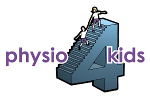
| Term | Meaning |
|---|---|
| Facilitation | A means of helping to achieve a desired movement, often used to help promote normal movement |
| Hypermobility | A connective tissue condition that results in increased range of movement |
| Inflammation | Classic signs of inflammation are heat, pain, redness, swelling and loss of function. This is an important and normal part of healing. |
| Lordosis | Increase in the curve of the lower back |
| Low Tone | Floppiness in the muscles |
| Lower Limbs | Legs |
| Medial Arch | The instep of the foot |
| Midline | The centre of your body (a line drawn straight down though your nose and tummy button). |
| Mobilisation | Specific movements, often influencing the small joints of the spine, in order to free up stiff or malaligned joints that cause pain |
| Muscle Tone | How floppy or stiff your muscles are |
| Osgood Schlatters | A common cause of knee pain often affecting young active/sporty teenagers |
| Passive Movement | Someone else moves a part of your body |
| Posterior | Behind |
| Postural Drainage | The use of postitioning to treat chest conditions |
| Postural Management | Keeping an eye on how children grow |
| Posture | The position your body is in |
| Prone | Lying on your tummy |
| Range of Movement | The amount a joint can move |
| Rotation | Turning one part of the body on another |
| Scolosis | When the spine has an 'S' shaped curve and is also twisted |
| Side flexion | Bending to the side |
| Standing Frame | Equipment to help weight bearing at the hips |
| Supine | Lying on your back |
| Sway Back | One kind of poor standing posture |
| TA's | Heel Cord |
| Trunk | The torso - body |
| Upper Limbs | Arms |
 This web page is written in PHP and validates as strict HTML4.01
This web page is written in PHP and validates as strict HTML4.01
This page was written by Robin Hall and is ©2013 Gina Farmer